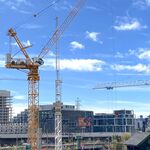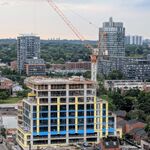This price included a lot of extras, including adding secondary entrances to a number of downtown stations, rebuilding Bloor, signal work, etc.
All of that crap needs to be done anyway but the city is trying to get the Province and York Region to foot part of the bill. It's good politics actually for the Mayor to be reminding the general public that more riders at the North end of the line means reduced capacity for people getting on at the South end.
Although I do agree that any upgrades to the subway should be paid for by the whole GTA, I question whether these upgrades are truly required. I think that the problems that the above solutions address are symptomatic of a much larger problem, which is that each subway line in the GTA serves too large a geographic area.
Given the small size of the Toronto subway, scarce funds must be spent primarily on system expansion. Although we
could spend $2.5 billion upgrading the Yonge subway (not including extension to Richmond Hill), a better way of reducing crowding would be to use that money to build new subway lines from scratch.
The upgrades that the TTC is consdering for the Yonge line, such as 90 minute frequencies and super transfer stations, should only be on the table for a fully built out subway system. They are appropriate when the density in a corridor is so high that even parallel subway lines aren't enough to address crowding.
Having said that, I believe that the TTC is taking a quantum leap in its subway building philosophy. Rather than striving to build lots of normal subway lines with normal sized stations and normal frequencies of 2-3 minutes, it's going straight from quasi LRT to souped up existing subway lines with insane frequencies and cavernous stations that only a super dense city like New York would require.
Wellesley should be the model subway station. It's barely beneath street level, has a modest bus terminal, and the station air rights are developed. Summerhill is another good one - it's shallow, efficient, and the concourse area is smaller than my 1 bedroom apartment. If these are the types of stations the TTC built and at these tunnel depths (but preferably directly underneath the main street), the cost of subway construction may drop to not much more than $100 million per km including stations. The most important thing to learn from the Sheppard TC line is that you can build underground transit for around this price so long as you don't build stations with 30 underground bus platforms, 2 kms of passageways, and a football field sized concourse area 50 feet underground.




